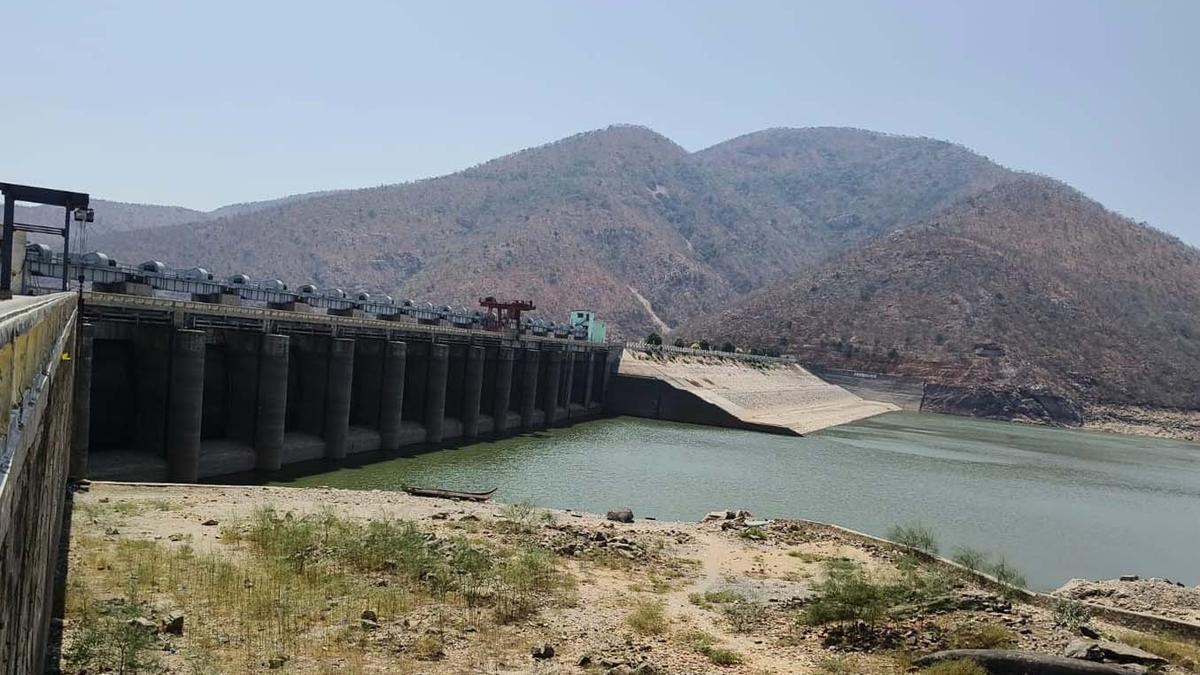
Water level at India's main reservoirs drops to 23%: CWC report
The Hindu
Water levels in India's main reservoirs are at 23%, 77% lower than last year, impacting regions differently.
The water level of the country's 150 main reservoirs has dropped to 23% and is 77% less than last year's levels at this time, according to Central Water Commission (CWC) data.
Last week, the live storage of these reservoirs was at 24%. The present storage is 77% of last year's levels and 94% of the normal storage, CWC data stated.
In its latest weekly bulletin, released on May 31, the Commission said that "the total live storage available is 41.705 billion cubic metres (BCM), equating to 23% of the total capacity".
"This is a significant decrease from the 53.832 BCM recorded during the same period last year and the normal storage level of 44.511 BCM. Consequently, the current storage is only 77% of last year's levels and 94% of the normal storage," it said.
The 150 main reservoirs monitored by the CWC have a combined live storage capacity of 178.784 BCM, which is around 69.35% of the total storage capacity created in the country.
Ten of the 150 reservoirs are located in the northern region — Himachal Pradesh, Punjab and Rajasthan — and have a live storage capacity of 19.663 BCM. This has dropped to 5.864 BCM (30% of total capacity), according to the CWC bulletin for the week of May 16 to May 31. Last year, during the corresponding period, storage was at 38%. The normal storage at this time of the year is 31%.
In the eastern region — Assam, Jharkhand, Odisha, West Bengal, Tripura, Nagaland and Bihar — there are 23 reservoirs with a total live storage capacity of 20.430 BCM. The available storage is 5.645 BCM, or 28% of the total capacity, the Commission said. In the corresponding period last year, it was 25%. The normal storage is 26%.

“Writing, in general, is a very solitary process,” says Yauvanika Chopra, Associate Director at The New India Foundation (NIF), which, earlier this year, announced the 12th edition of its NIF Book Fellowships for research and scholarship about Indian history after Independence. While authors, in general, are built for it, it can still get very lonely, says Chopra, pointing out that the fellowship’s community support is as valuable as the monetary benefits it offers. “There is a solid community of NIF fellows, trustees, language experts, jury members, all of whom are incredibly competent,” she says. “They really help make authors feel supported from manuscript to publication, so you never feel like you’re struggling through isolation.”

Several principals of government and private schools in Delhi on Tuesday said the Directorate of Education (DoE) circular from a day earlier, directing schools to conduct classes in ‘hybrid’ mode, had caused confusion regarding day-to-day operations as they did not know how many students would return to school from Wednesday and how would teachers instruct in two modes — online and in person — at once. The DoE circular on Monday had also stated that the option to “exercise online mode of education, wherever available, shall vest with the students and their guardians”. Several schoolteachers also expressed confusion regarding the DoE order. A government schoolteacher said he was unsure of how to cope with the resumption of physical classes, given that the order directing government offices to ensure that 50% of the employees work from home is still in place. On Monday, the Commission for Air Quality Management in the National Capital Region and Adjoining Areas (CAQM) had, on the orders of the Supreme Court, directed schools in Delhi-NCR to shift classes to the hybrid mode, following which the DoE had issued the circular. The court had urged the Centre’s pollution watchdog to consider restarting physical classes due to many students missing out on the mid-day meals and lacking the necessary means to attend classes online. The CAQM had, on November 20, asked schools in Delhi-NCR to shift to the online mode of teaching.









